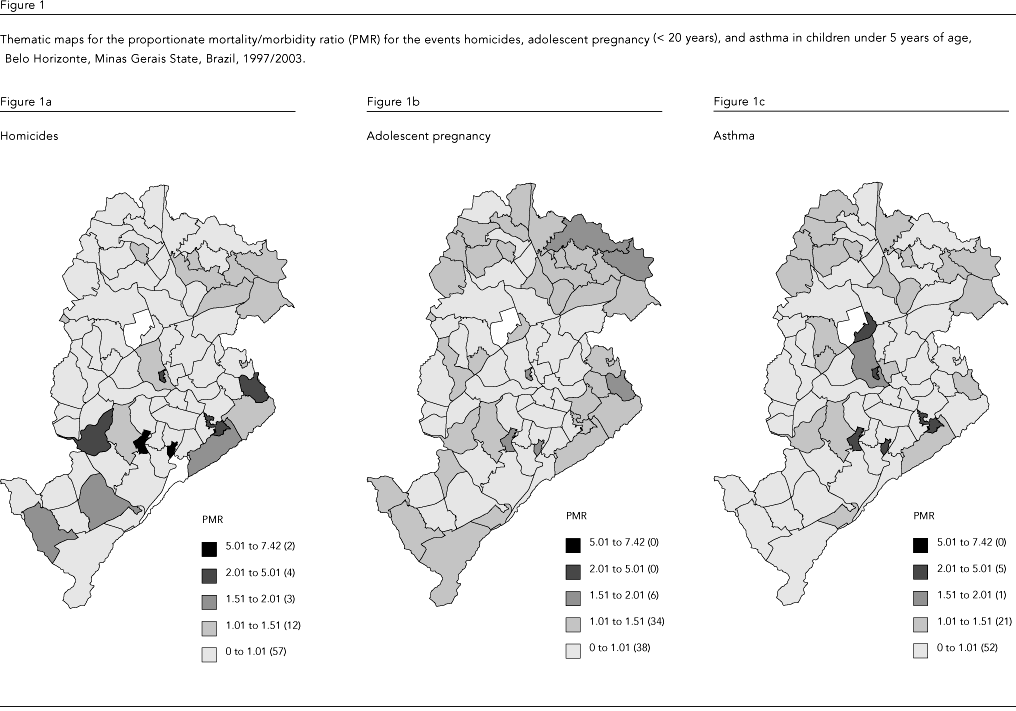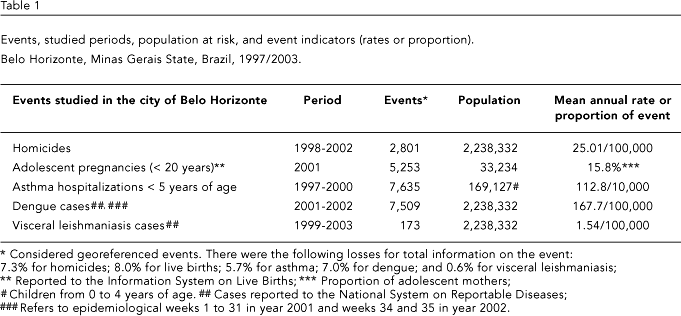This study aims to determine spatial patterns of mortality and morbidity for five health problems in an urban environment: homicides, adolescent pregnancy, asthma hospitalization, and two vector-borne diseases, dengue and visceral leishmaniasis. All events were obtained through the city health database and geoprocessed using residential addresses and 80 planning units consisting of census tracts. We used thematic maps, proportionate mortality/morbidity ratios by planning unit, and the overlapped rank of the 20th worse planning unit rates for each event. A spatial pattern of high rates of homicides, proportion of young mothers, and hospitalization due to asthma overlapped in socially and economically disadvantaged areas. For the two vector-borne diseases, high rates with great dispersion were found in underprivileged areas, in contrast with very low rates among higher income areas. The results indicated the coexistence of heavier disease burden for residents of urban areas where poverty and lack of effective public health policies may be modulating social health problems. For the two vector-borne diseases, an environmental intervention in one mosquito-borne disease might be playing a role in the other's incidence.
Cities; Spatial Analysis; Urban Health




